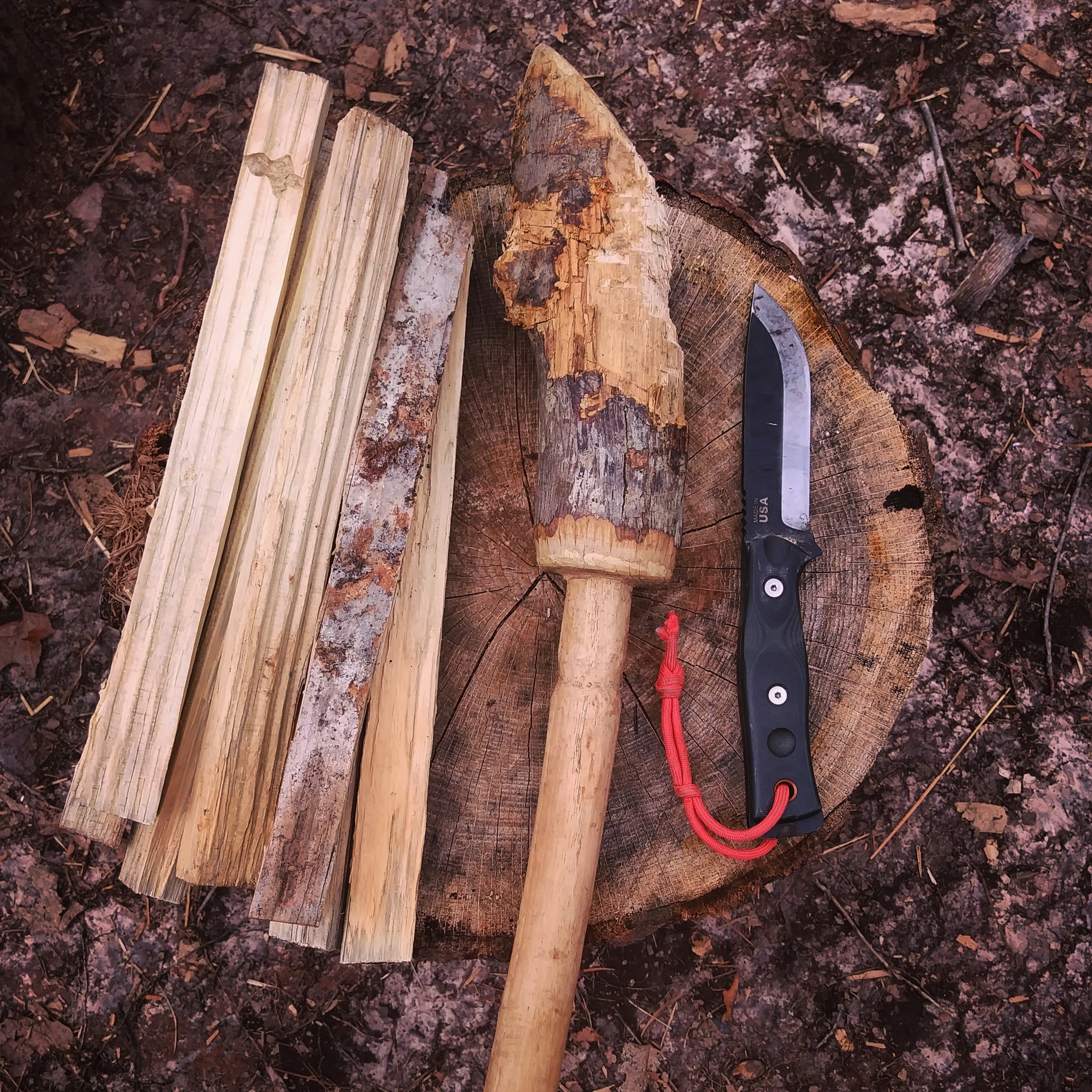We love learning cool new skills as much as the next guys. But if we’re being honest, your time is better spent mastering the basics if you want to become a truly competent outdoorsman. And if you’re green, even the basics are a cool new skill. So from time to time, we take it back to the building blocks of bushcraft in order to keep y’all sharp, or enlighten you if you’ve never heard any of this before.
If you've ever taken one of our courses (even if it wasn't a firecraft course), there's a strong chance that you've seen us baton firewood, and there's also a good possibility you've done it yourself. But while we show you the HOW all the time, you may not have heard us talk about WHY we baton. For one, it's more controlled than swinging an axe or hatchet, and it's easier to get consistently sized sticks, especially for beginners. Unless you’ve spent a considerable amount of quality time with a hatchet, kukri, or machete, it’s really difficult to get small kindling sticks by just swinging it. Using a baton makes it much easier, although it’s arguably not quite as satisfying. Even experienced woodsmen who do their rough splitting with a hearty swing will still often turn to a baton to get their kindling down to thumb-sized sticks.
More importantly, it allows access to the interior of the stick or log, which is generally drier and burns far more efficiently. Tree bark functions as a protective layer of skin that guards against insects, disease, and most importantly, forest fires. It's also where a lot of the tree's water is contained. If you think about it, intact trees are specifically designed not to burn. This is one of the many reasons that most people's campfires suck (no offense) - they try to burn whole logs and they smoke, steam, and finally go out. The bark did its job. That's why we split firewood – to overcome the tree’s natural defense mechanism. This is especially important with green or wet wood, and can make all the difference between getting a blaze alight quickly in bad conditions and constantly fighting wet wood that never really does want to burn. I’ve seen sticks of firewood that had been completely soaking wet for several days be split open and have dry cores that burned readily.
For those of y’all who are new to this, yes, it does require more in the way of woods tools than just foraging firewood and trying to get it to burn. You’ll need a fixed-blade, full-tang* knife at the bare minimum, and ideally a saw as well. You can use any stout piece of wood for a baton, but a purpose-built one that you hang on to sure is nice. While processing firewood this way is more work on the front end than just gathering it up and trying to burn it, the rewards are well worth it. You’ll be blessed with fires that are easier to start, less likely to die, don’t smoke as much, and put off more heat.
Want to learn more (way more!) great firecraft tips like this in a supportive, guided environment? Join us for Firecraft Essentials on Saturday, May 11th from 9am-7pm! Even if you consider yourself a pretty good fire builder, we’re betting there’s still some stuff you don’t know. Come learn it with us and register here: https://www.sarcraft.com/course-registration/firecraft-essentials-1
- Alex
*One question we get quite often is “Can I baton with a folding knife?” Yes, you can, but we don’t recommend it. Open it most of the way without locking it, and proceed as you normally would. But there’s no guarantee that it still won’t break. Even stout folders just aren’t made to be whacked on the spine and driven through a piece of wood. Consider this an emergency measure rather than something to do all the time. Along the same lines, knives with rat-tail tangs or hollow handles really aren’t made for this either. Invest in a full-tang fixed blade like the TOPS Fieldcraft or Condor Bushlore, or if you’re really bad about breaking stuff, the KA-BAR Becker BK2. Or better yet, get a kukri. You won’t regret it. You can pick up all of these knives here: https://www.sarcraft.com/products-1?category=Knives


